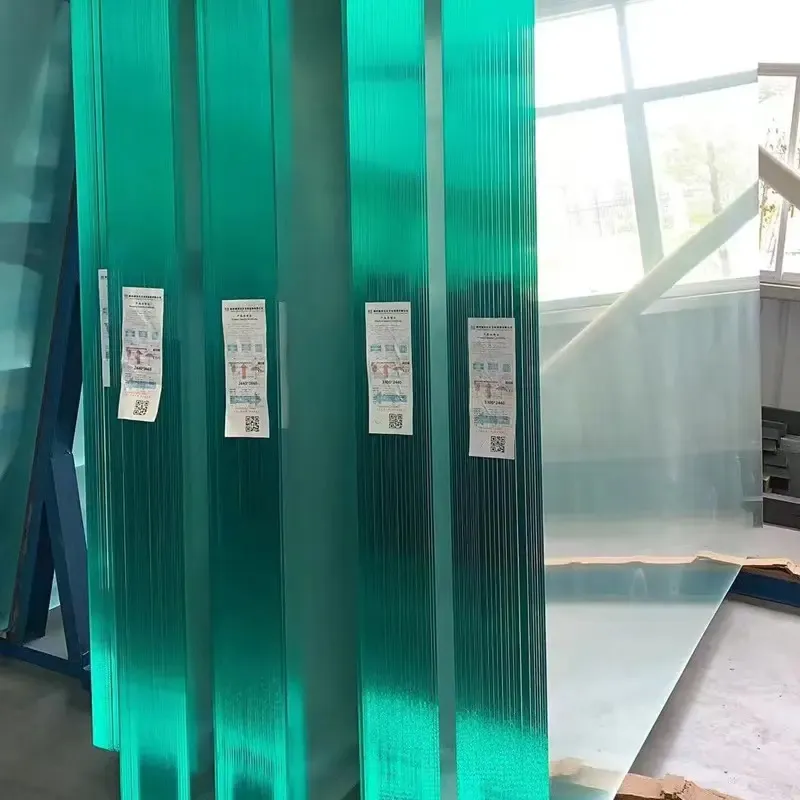Tempered Laminated Glass A Comprehensive Overview
Tempered laminated glass is a popular choice in modern architecture and construction due to its remarkable strength, safety features, and aesthetic appeal. This innovative material combines two important technologies tempering and laminating. Together, these processes create a product that offers enhanced durability and visual clarity, making it suitable for a variety of applications.
The Process of Manufacturing
The manufacturing of tempered laminated glass begins with the creation of tempered glass sheets. Tempering involves heating the glass to high temperatures (around 620-680 degrees Celsius) and then rapidly cooling it. This process alters the internal structure of the glass, increasing its strength compared to standard glass. Tempered glass is approximately five to ten times stronger than untreated glass of the same thickness and is also more resistant to thermal stress.
Once the tempered glass sheets are produced, the next step is lamination. This involves bonding two or more layers of tempered glass together using a layer of polyvinyl butyral (PVB) or ethylene-vinyl acetate (EVA) interlayer. This interlayer is crucial, as it holds the glass layers together even when broken, preventing shattering and offering outstanding safety features. The laminating process also improves sound insulation and provides ultraviolet (UV) protection, preventing harm to both occupants and interior furnishings.
Safety and Durability Features
One of the most significant advantages of tempered laminated glass is its safety. In case of breakage, the glass fractures into small, blunt pieces rather than sharp shards, significantly reducing the risk of injury. This safety feature makes it a preferred material for environments such as schools, hospitals, and commercial buildings.
tempered laminated glass
Moreover, the laminated structure adds a layer of protection against external forces such as impact and weather conditions. It can withstand strong winds, flying debris, and even attempted break-ins, making it particularly useful in areas prone to inclement weather or vandalism. This durability not only enhances safety but also extends the lifespan of the windows and facades in which it is used.
Applications in Architecture and Design
Tempered laminated glass has a wide range of applications in architecture and design. It is commonly used in facades, skylights, balustrades, and glass doors. Its strength and visual clarity make it ideal for creating expansive glass walls that maximize natural light while maintaining safety and security. Additionally, the sound insulation properties of laminated glass make it a preferred choice in urban settings where noise pollution may be a concern.
Furthermore, tempered laminated glass can be manufactured in various thicknesses, colors, and tints, allowing architects and designers to create stunning aesthetic features while meeting specific functional requirements. Whether used in residential, commercial, or industrial settings, this type of glass provides both beauty and performance.
Conclusion
In summary, tempered laminated glass represents a significant advancement in glass technology, offering unparalleled strength, safety, and aesthetic versatility. Its unique properties make it an ideal choice for a wide range of applications, firmly placing it at the forefront of modern architectural design. As construction trends continue to evolve, the demand for such innovative materials will likely grow, shaping the future of building design and construction practices.
 Afrikaans
Afrikaans  Albanian
Albanian  Amharic
Amharic  Arabic
Arabic  Armenian
Armenian  Azerbaijani
Azerbaijani  Basque
Basque  Belarusian
Belarusian  Bengali
Bengali  Bosnian
Bosnian  Bulgarian
Bulgarian  Catalan
Catalan  Cebuano
Cebuano  Corsican
Corsican  Croatian
Croatian  Czech
Czech  Danish
Danish  Dutch
Dutch  English
English  Esperanto
Esperanto  Estonian
Estonian  Finnish
Finnish  French
French  Frisian
Frisian  Galician
Galician  Georgian
Georgian  German
German  Greek
Greek  Gujarati
Gujarati  Haitian Creole
Haitian Creole  hausa
hausa  hawaiian
hawaiian  Hebrew
Hebrew  Hindi
Hindi  Miao
Miao  Hungarian
Hungarian  Icelandic
Icelandic  igbo
igbo  Indonesian
Indonesian  irish
irish  Italian
Italian  Japanese
Japanese  Javanese
Javanese  Kannada
Kannada  kazakh
kazakh  Khmer
Khmer  Rwandese
Rwandese  Korean
Korean  Kurdish
Kurdish  Kyrgyz
Kyrgyz  Lao
Lao  Latin
Latin  Latvian
Latvian  Lithuanian
Lithuanian  Luxembourgish
Luxembourgish  Macedonian
Macedonian  Malgashi
Malgashi  Malay
Malay  Malayalam
Malayalam  Maltese
Maltese  Maori
Maori  Marathi
Marathi  Mongolian
Mongolian  Myanmar
Myanmar  Nepali
Nepali  Norwegian
Norwegian  Norwegian
Norwegian  Occitan
Occitan  Pashto
Pashto  Persian
Persian  Polish
Polish  Portuguese
Portuguese  Punjabi
Punjabi  Romanian
Romanian  Russian
Russian  Samoan
Samoan  Scottish Gaelic
Scottish Gaelic  Serbian
Serbian  Sesotho
Sesotho  Shona
Shona  Sindhi
Sindhi  Sinhala
Sinhala  Slovak
Slovak  Slovenian
Slovenian  Somali
Somali  Spanish
Spanish  Sundanese
Sundanese  Swahili
Swahili  Swedish
Swedish  Tagalog
Tagalog  Tajik
Tajik  Tamil
Tamil  Tatar
Tatar  Telugu
Telugu  Thai
Thai  Turkish
Turkish  Turkmen
Turkmen  Ukrainian
Ukrainian  Urdu
Urdu  Uighur
Uighur  Uzbek
Uzbek  Vietnamese
Vietnamese  Welsh
Welsh  Bantu
Bantu  Yiddish
Yiddish  Yoruba
Yoruba  Zulu
Zulu 

